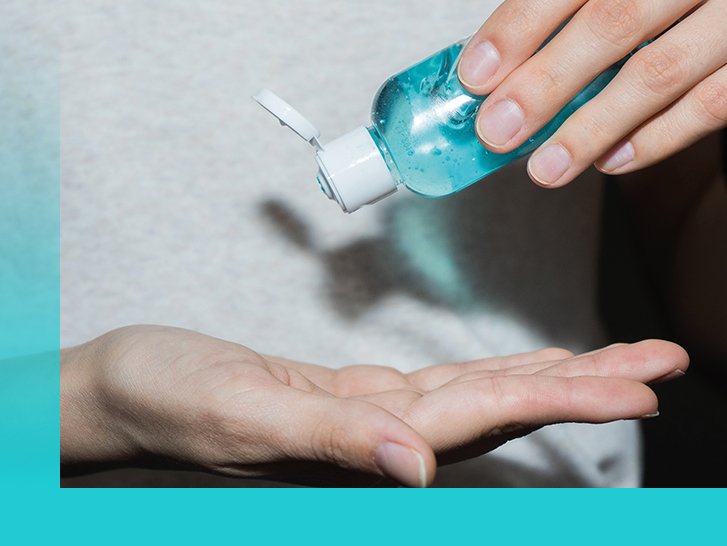Emergency
Basically, every patient is at high risk of spontaneously getting into an emergency situation after a tracheostomy. Even an unintentionally inhaled, larger foreign body can cause respiratory distress and cannot be coughed up productively due to reduced or non-existent subglottic pressure. There is a risk of suffocation without immediate endotracheal suction.
Therefore, all persons involved in the care of the patient must be prepared for an emergency and its professional management. Here too, laryngectomised patients represent a special case. Since inhalation and exhalation take place exclusively via the tracheostoma, no alternative airway (mouth/nose) can compensate for the problem.
Keep the emergency telephone number clearly visible on the telephone at home. Special emergency aids should be close at hand. A signal emergency device is also helpful. Emergency cards and stickers inform potential first responders about the special handicap. Affix the emergency stickers in a clearly visible place in your home environment and/or on the car window and always carry the card with you.
Immediate measures in case of respiratory arrest
CHECK - CALL - PRESS
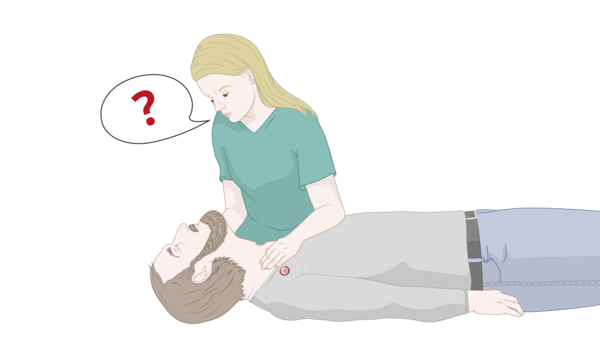
1 Check
Is the person conscious and responsive? For example, does the person respond to shaking of the shoulders?
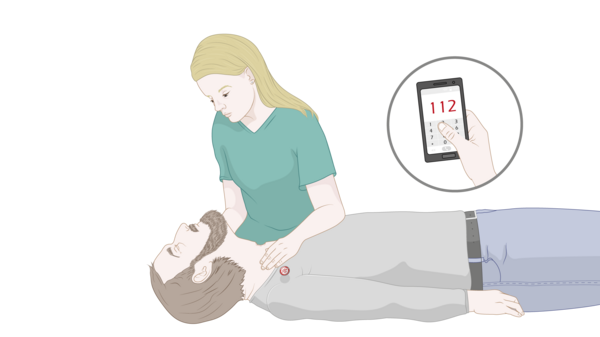
3 Call
In emergency call 112. Explain the situation and point out the special case of a "neck breather".
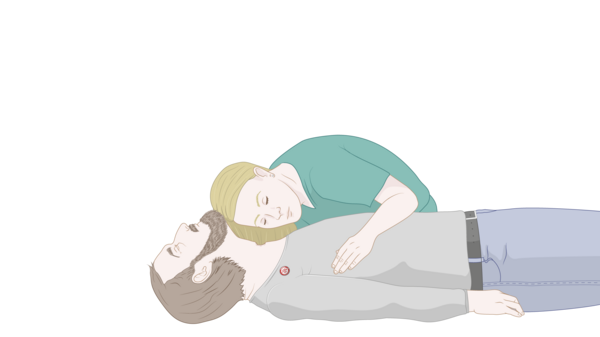
2
Can breathing behaviour still be detected? Can airflow be felt or heard coming out of the tracheostoma?
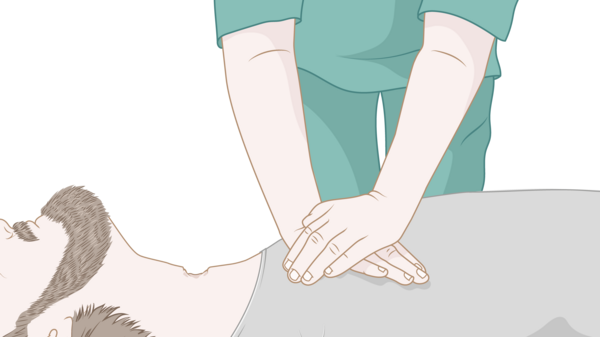
4 Press
Until the emergency services arrive, apply rapid, firm chest compressions to the centre of chest (100-120 times/minute).
How does one recognise an impending emergency?
Symptoms such as palpitations, sudden nausea, dizziness and feeling faint or blurred vision can be signs of an impending emergency. By activating the LARYVOX® Alarm signal call device, which produces a shrill alarm tone, the affected person can attract the attention of people in his/her vicinity.
Immediate measures to strengthen circulation are advisable in any case: lay the affected person flat on the floor, make an emergency call, raise the legs slightly, clear the airway opening (tracheostoma), stretch the head backwards, remove an internal cannula if necessary.
Symptoms of respiratory arrest
- No air flow from the tracheostoma (neither audible nor palpable)
- No movements of the chest and abdomen
- Blue discolouration of the skin (cyanosis)
- No reaction to shaking by the shoulders
- Unconsciousness (no response on challenge)
- Dilated pupils
Request your preferred emergency identification from us free of charge. There is a choice of an emergency button (badge) with integrated safety pin for flexible attachment to different items of clothing, or alternatively an emergency patch for permanent attachment to a favoured item of clothing, for example for sporting activities. Simply iron on. Finished
Use your next order for medical aids to request your personal item at the same time:
- Emergency button REF 90290
- Emergency patch/iron-on image REF 90291
Also raise the issue of an emergency situation when our sales representative visits you. You are then welcome to ask any urgent questions in person and have them answered competently.

